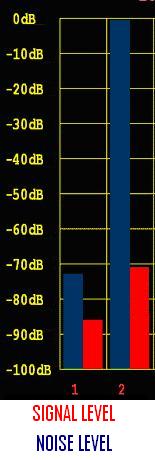Sound Talks
Gain Structure
I often receive this call or experience it first hand when walking through a wide variety of audio installations. It’s the hiss of a snake from the direction of the overhead speakers. It is present all the time and often even worse when a page occurs.
The truth is it is not something living in the PA but rather a different sort of beast called “Gain Structure”.
Gain Structure refers to the levels you set as you progress through your equipment's signal chain.
From microphone – preamp – output gain on preamp – input gain on various effect processors – amplifiers, etc. All electronics have a certain noise floor. The goal is to overcome this noise floor with the hottest intended signal (without distortion). If attention is not paid to these settings along the signal path your intended signal level will decrease and the (unwanted) noise floor will increase.
Again, while going through this signal path one of two things can happen.
-
Too hot of a signal creating overload and distortion (max gain before distortion)
-
Too weak of a signal creating an increase of noise floor (or Hiss).
Let’s run through a simple chain of microphone / pre-amp (mixer) / EQ/ amplifier.

Steps
-
With a signal present on the mic as it will be intended to use (speak into it). Adjust the input gain to the 0db level point just to the peaking and then back off just a touch.
-
Now we can look at the EQ section of the chain. The same process must again be followed whether the EQ is onboard or external. The signal feeding the EQ must be at the 0db mark along with the output once the EQ adjustments are complete.
-
At the EQ stage there is one other mistake that often occurs that can lead to noise problems. To be simplistic let’s say we have a 3 band EQ (Low/Mid/High) and you want to have more bottom and High’s. Most people will simply boost the High/Low controls. What you are actually doing along with boosting the Hi/Low frequencies is increasing the noise floor along with it. Doing this over many inputs will add to a very poor (Hissy) effect on the output. The correct solution is easy, simply just cut the Mid. This will have the same sonic effect but will decrease the noise floor. So Cut, don’t boost EQ’s where possible while adding equalization.
-
Next we are on to setting the gain from the preamp (or main output EQ) to the amplifier. Here we want to be sure the speakers are discontinued from the amplifier. It is helpful here to have a pink noise generator (full spectrum constant audio) to send through the system (If not use a well balanced CD signal). Same as the input gain adjustment we want to set the output to the 0db point just at peak and then back off just a touch. Now do the same thing to the amplifier. Start turning the gain controls of the amplifier up slowly until the signal is present and just touch the peak point and then back off just a touch.
-
Now you can bring down the master output on the preamp (mixer) and connect your speakers and enjoy max output without a high noise floor.
-

Most importantly the snakes that you thought were in your speakers will now have moved on to be someone else’s problem
- Support
- Sound Talks
-
Gain Structure